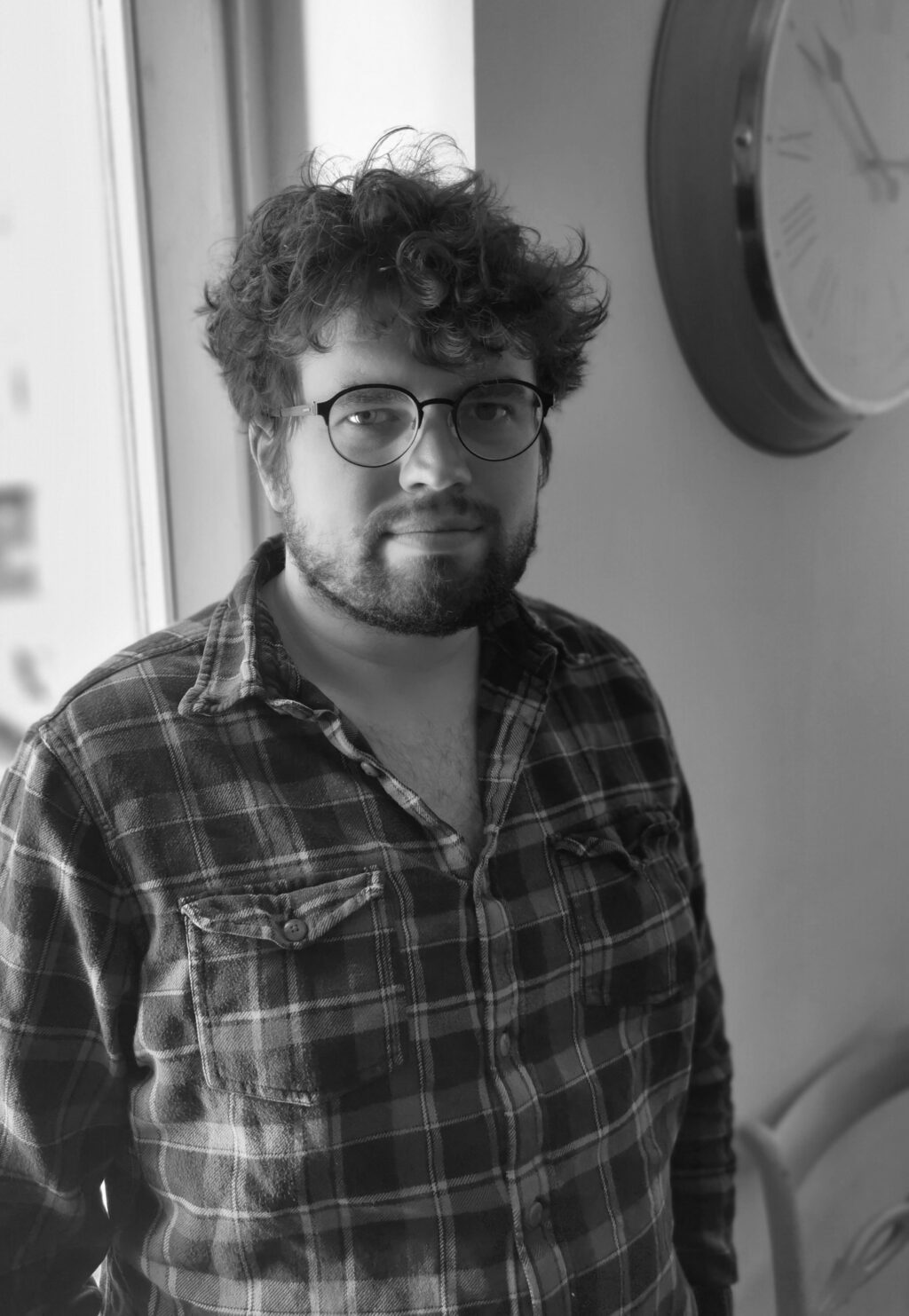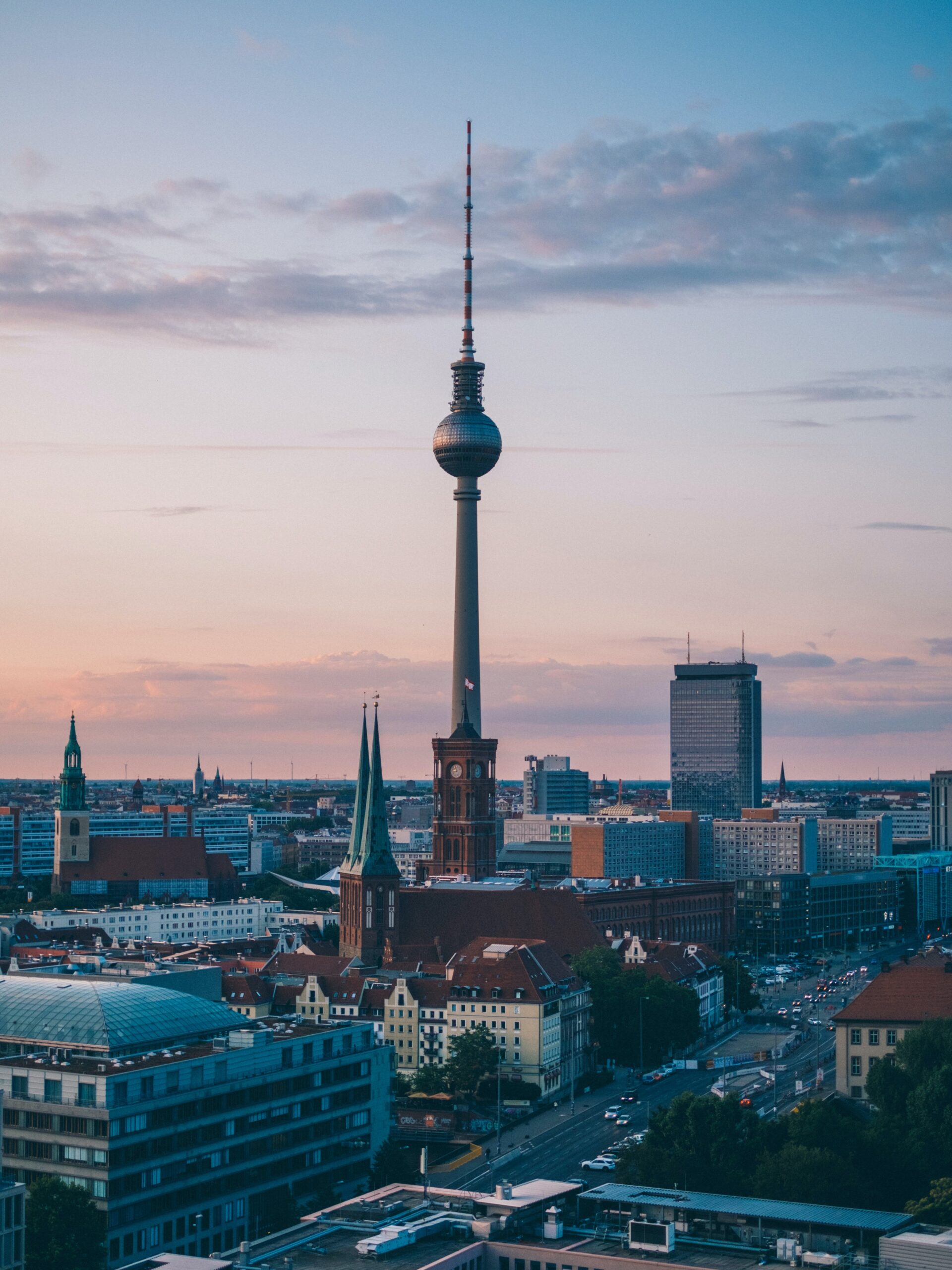Mon Amour – but what is Marzahn like? And what other books take us deeper into Berlin? Bookseller and translator John Owen takes to the S-Bahn and the bookshop to find out.
Marzahn is not a pretty place. It rises out of the flat Brandenburg countryside like a caricature of a modernist metropolis, its massive, heavy prefab blocks seeming almost to wage war on the often equally drab landscape from which they emerge. Many Berliners will only ever encounter it on visits to edgeland shopping centres. And despite its traumatic history – the Nazis converted part of a former sewage field here into a work camp for Sinti and Roma Germans, with terrible sanitary conditions and deportations to death camps meaning that very few inmates survived – tourists are likely to be completely unaware of its existence.
There is a small GDR memorial to the victims in the local cemetery, but without knowing exactly where it is you would never be able to find it. The tower blocks built here during the GDR regime in the seventies and eighties buried the history of this suburban village under a modernist utopian vision of a future that was lost in 1989. Today, this brutal approach to the past feels incongruous in a city that in more recent times has been so defined by memory and memorial. It is perhaps odd, then, that one of my first encounters with the area was through a historical seminar looking at how much of GDR society and life had been forgotten since 1990.
One of the most interesting aspects we covered was housing. From the very beginning, there was tension between the GDR’s desire both to make grand architectural statements and to meet individual housing needs. The provision of good quality housing – from the 1950s neo-classical Stalinist buildings on Karl-Marx-Allee (then Stalinallee) in Berlin, built as ‘Palaces for the People’ at a time when much of the city had been reduced to rubble, to the pre-fab modernist Plattenbauten that came to define the state’s industrial approach to architecture in the 1970s – was an important way for the GDR to project its socialist goals.
It was in this context that we began to talk about Marzahn. Although most of us had a decent understanding of what modernist architecture had been aiming to achieve, this still seemed a strange place to look for successful interaction between the state and its citizens. A lot of us (we mostly came from places – including Berlin – where post-war housing is viewed with deep suspicion) felt that somewhere like Marzahn represented failure; an overbearing attempt to impose ideals from the top down, with all the violence urban planning could muster.
A few minutes in to what looked as if it was going to be a one-way discussion, one woman put up her hand and explained quietly that her family had lived in Marzahn for almost 40 years. They had moved there from Prenzlauer Berg, into a brand new flat, and had never regretted it. No-one else in the group had the direct experience to disagree with her so instead we asked questions. The place she described was not drab and characterless. Its purpose-built facilities, she said, encouraged a greater sense of belonging and community than in areas that had existed for much longer, and the identikit design of its flats meant that everyone had a comfortable living environment, with their own bathroom, kitchen and (more often than not) balcony. Although not all of the book’s characters radiate enthusiasm for the area, it is this version of Marzahn that shines through in Marzahn, mon Amour by Katja Oskamp (transl. Jo Heinrich).
Katja Oskamp knows how to capture the essence of people beautifully. They really come to life in her portraits. A powerful book.
Frank-Walter Steinmeier, President of Germany
The access Oskamp grants to the vivid characters she describes is a privilege; one that comes with the intimacy that only immersion in a place can provide. It no doubt also helps if the immersion is delivered through the eyes of a chiropodist, where clients are embarrassed into telling you about the minutiae of their lives to avoid discussing the minutiae of their feet! This relationship allows her to break through the foreboding tower blocks pictured on both the German and British covers to access the human stories they contain.
In the German publishing world, Marzahn, mon Amour is one of an ever-increasing number of novels that consider Germany’s capital through place rather than personality or grand historical narrative. One of the most prominent examples of this is Bude/Munk/Wieland’s novel by collective, Aufprall, which follows the lives of a group of young Kreuzberg squatters in 1980s West Berlin. Set in the period when Marzahn was being built, the novel depicts an area only a couple of miles away from that site; but the lives of its protagonists and their attitudes to urban space could scarcely be more different than the lives and attitudes of the characters in Marzahn, mon Amour. The characters who populate Aufprall take over empty buildings (which – as is still the case today – are often kept empty by owners in the hope that their value will increase more if they do not come with tenants) and turn them into radical creative spaces. Their engagement with architecture parallels their perspective on Germany; they accept the past but continue to believe in their potential to radically reclaim and reshape the country, creating an entirely new and utopian future.
The characters’ utopianism and rejection of the Nazi past have aspects in common with Marzahn’s tabula rasa approach, but their dependence on the physical structures of the past gives them a more nuanced and layered consciousness of the versions of Germany that have gone before them. On top of that, the collectives they form promote tolerance, not only of how people live (for instance in terms of sexuality, types of relationship, work) but also of how they occupy physical space. Each squatter creates their own area within the collective, with some wanting many of the everyday comforts that people hanker for in Marzahn and others being content to live in the squalor of dilapidated rooms and having little interest in – or need for – personal space and privacy.
People continue to be surprised to learn that life in the East may have been more comfortable, and the housing better, than it was in the West. It was of course a more nuanced picture than this: East Berlin had plenty of poor-quality accommodation, along with a squatter movement of its own. Nonetheless, it remains difficult for many in the post-1990 world to imagine that life in the East might have been bearable for a large proportion of its citizens. One recent novel presenting a vivid depiction of the gradual dilapidation of much of West Berlin’s housing after the war is Regina Scheer’s Gott Wohnt im Wedding (“God Lives in Wedding”). This is an ambitious book that focuses on one building in what is today an increasingly gentrified part of Berlin in order to tell the story of Nazi racial oppression and the often racially-based economic suffering of post-war West Germany. Its focus on a single building allows it to highlight the huge changes that came about in people’s living conditions as the status of Berlin’s districts rose or fell with the city’s changing borders and demographics.
Aufprall and Gott Wohnt im Wedding have not yet been translated, and this makes it all the more refreshing that Marzahn, mon Amour has been picked up. For many years, books offering English-language readers a more nuanced perspective on Berlin tended to concentrate on what life was like under a dictatorship. From Maxim Leo’s Red Love (transl. Shaun Whiteside) to more recent publications such as Ronen Steinke’s Anna and Dr Helmy (transl. Sharon Howe), publishers have helped enhance understanding of some of the big events in Berlin’s history by looking at individuals’ lives under Nazi and GDR rule.
Many of these books consciously examine opposition or even resistance to dictatorship, with the central question they address being how people survived rather than how they lived. However, contemporary German writing about Berlin is increasingly formulating questions in the present tense about how people live, focusing on the city as it is today, and its diversity. Novels such as Khuê Phạm’s Wo auch immer ihr seid, Sharon Dodua Otoo’s Adas Raum, and Sasha Marianna Salzmann’s Im Menschen muss alles herrlich sein look at immigration and tolerance in Berlin from the 1960s to the present day while Roland Schimmelpfennig’s Die Linie zwischen Tag und Nacht is a state-of-the-city novel exploring modern-day Berlin’s diversity through the lens of its famous nightlife (which after two years of pandemic and in the light of rent increases could soon be as much a thing of the past as the socialist values that led to the building of Marzahn). Schimmelpfenning’s book is forthcoming in English translation by Jamie Bulloch in 2023, published by MacLehose Press.
Even in Berlin, Marzahn was for many years seen as a place you survived rather than lived in. Marzahn, mon Amour’s huge success might change this perception. It is to be hoped that its publication in English will stimulate greater interest in the everyday, both in the past and the present, and lead to the publication of more books about Berlin as a place. This may in turn help open up the city to new readerships and lead to a better understanding of the city outside of Germany.

John Owen is a bookseller, translator and tour guide who lives in Berlin.
Berlin photo credit Adam Vradenburg (vradenburg.net/) via Unsplash





